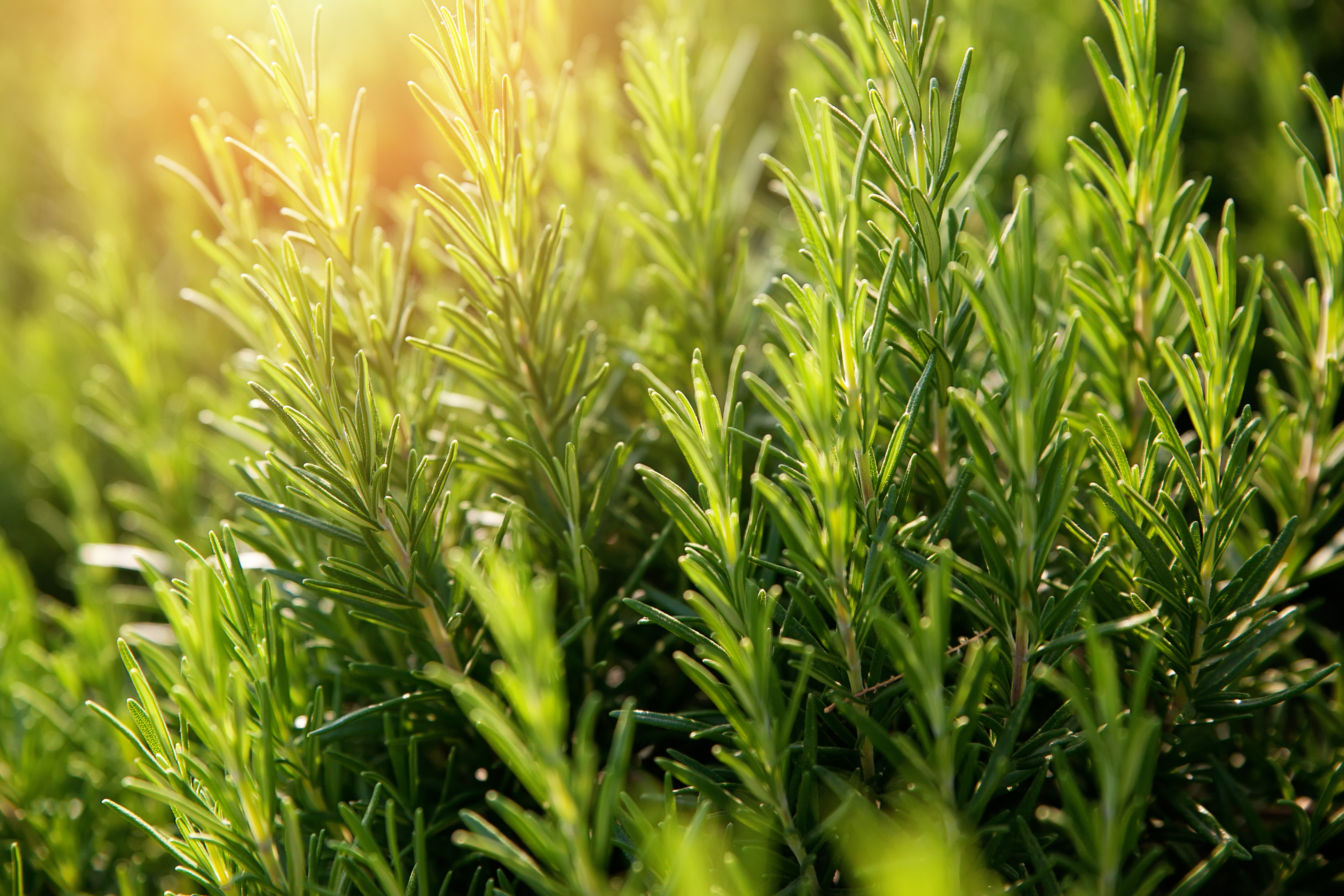Rosemary
Rosemary has an intense fragrance, making it very popular in Mediterranean cuisine. Its sweet flowers are eaten raw, attract bees and give a special flavour to honey. Rosemary has been cultivated since Antiquity and is believed to have many beneficial properties. While in Ancient Greece it was both a token of love and consumed to enhance memory, in the Middle Ages people burned rosemary to ward off evil spirits and to purify the air during outbreaks of the plague.
Le romarin, une herbe aromatique populaire du bassin méditerranéen. ©Shutterstock/ElenaEfimova
From ‘dew of the sea’ to ‘Mary’s rose’
The name ‘rosemary’ could come from the Latin ros marinus, meaning ‘dew of the sea’, perhaps because this shrub thrives by the sea where humidity is high. Another hypothesis suggests it comes from the Greek rhops myrinos, which translates as an ‘aromatic bush’, owing to its camphor-like fragrance somewhat similar to incense. This would explain why in Provence it was given the name ‘incense tree’. Legend has it that rosemary bushes originally had white flowers. Before Mary gave birth to Jesus, she is said to have placed her blue cloak on a rosemary bush. The flowers then turned blue and thereafter the plant was called ‘Mary’s rose’.
A sun-loving plant
Native to the Mediterranean basin, rosemary has been cultivated since ancient times. It grows on calcareous, arid and sunny soil, such as on scrubland and rockeries. It does not do well in a very dry climate but prefers humid coastal regions. Rosemary likes warm climates but can withstand frosts. It is most widely cultivated in Spain, Tunisia, Morocco, Italy, France, Algeria and Portugal, mainly for the extraction of essential oil. It sometimes blossoms in January, but generally from February until April/May. Some varieties flower again in early autumn.
A shrub with fir-like leaves
Rosemary (salvia rosmarinus) is a very aromatic evergreen shrub that can grow up to two metres high. It has woody, branched twigs covered in needle-like leaves, that are bright green on the upper side, and silvery underneath. The first lavender-blue flowers appear on the tip of the branches at the end of winter.
A classic condiment in Mediterranean cuisine
Mediterranean cuisine features rosemary in a variety of ways. The sprigs, whether fresh, ground, or whole, add flavour to meat dishes and marinades. The flowers are also edible and, given their milder flavour, are used in salads, desserts and pastries. They are also are melliferous: ‘Narbonne honey’ is made purely from rosemary nectar. The essential oil from rosemary plants is between 10% and 20% camphor, hence it is sought after for perfumery. Rosemary is also widely used in phytotherapy and aromatherapy, which credit it with analgesic, antiseptic, and expectorant properties, as well as for boosting blood circulation.
Symbol of love and protection
Ancient Greeks dedicated this plant to the goddess Aphrodite, and rosemary crowns were worn by brides as a symbol of love and fidelity. When preparing for exams, students made rosemary crowns to improve their memory. The Romans found burning twigs of rosemary to be soothing, while the Egyptians placed sprigs of rosemary in pharaohs’ tombs to protect their souls. In the Middle Ages, rosemary was burned to ward off evil spirits and to purify the air during outbreaks of the plague.







